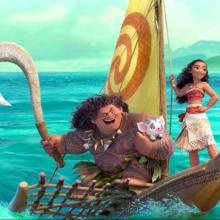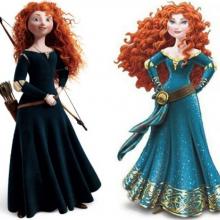brave
“I saw my poem posted on another website and attributed to someone else,” Beth Strano wrote in response to a comment on her post. “I thought it was an honest mistake, but then I searched and realized this woman has been claiming that she wrote this poem and publishing it and doing readings of it.”
With its new full-length, animated feature Moana, Disney Studios expands the ethnic and religious diversity in its heroines, in this case with a spirited Polynesian girl, played by Auli’i Cravalho, who is a native Hawaiian. The film is the latest in the lucrative princess franchise that began in 1937, with Snow White and the Seven Dwarfs, and was enhanced over the decades with films like Sleeping Beauty and Cinderella.
Moana finished No. 1 at the box for the third weekend in a row, earning $145 million since opening over the Thanksgiving weekend.
Having a 3-year-old daughter opens your eyes to a world that you did not know existed, the world of princesses. Disney has cornered the princess market; there are currently 11 official Disney princesses, and if you are brave enough to travel to Disney World/Land or even a Disney store, you will soon find out that there is a plethora of accessories — dresses, placemats, and cups (just to name a few).
Disney has come under fire in the past for focusing only on Caucasian women — Snow White, Cinderella, Aurora (Sleeping Beauty) and others. But over time, non-white princesses were introduced, like Mulan, Pocahontas, Jasmine, and Tiana.
Disney’s latest princess was Merida from the film Brave broke most of the Disney princess rules. She didn’t like pretty gowns, she liked to shoot bows and arrows, and her crowning glory was frizzy, wild red hair. Some people believed that Disney had finally broken the mold of the “damsel in distress” model of princesses that has been a dominant theme throughout many of the films. The trend actually started with Pocahontas and Mulan; maybe the theme of strong women role models would continue. Brave was a cute film with a wonderful message. Merida had a round face and was rough and tumble with her triplet brothers. She didn’t want fancy dresses or even want to be a princess; Merida just wanted to be Merida. She was the example of girls being girls, no matter how they look.
However, in a recent update, Disney decided to take the idea of Merida in Brave and throw it out the window. Merida, for her official induction into the Disney princess cohort, got a bit of a makeover. Merida 2.0 was taller, skinnier in the waist and had a slimmer face. Her famous bow-and-arrow set are missing, and her iconic wild hair has been tamed.
After the uproar that followed, Disney quietly pulled the newer version of Merida.
But my question for Disney stands: why? What was so wrong with Merida that it warranted the change?
Love, we read over and over in the Bible, casts out fear.
The angels to Mary: Do not be afraid. To the shepherds: Do not be afraid. Do a search on that phrase and you’ll find it numerous times from 2 Kings through Revelation. When he appears to humans, our God of love is always prefacing his messages with, “Do not be afraid.”
As a mother, I want to raise brave kids who hear that message and know it to their toes. Everything is going to be all right. Love wins, as they say.
I want them to be people who know that there is a bigger picture, a spiritual promise of hope and redemptive, even when life circumstances feel frightening.
I don’t want them to lose sight of it or fail to see God’s gifts of love around them because they are afraid of what, ultimately, cannot harm them.
It’s not always easy, however, for me to be brave.



